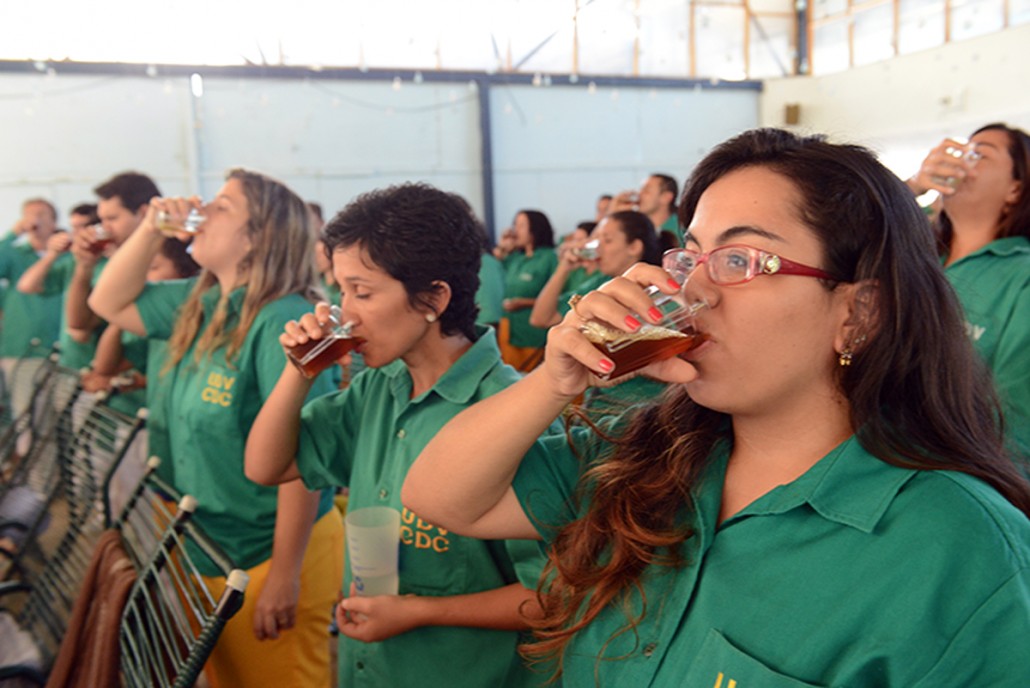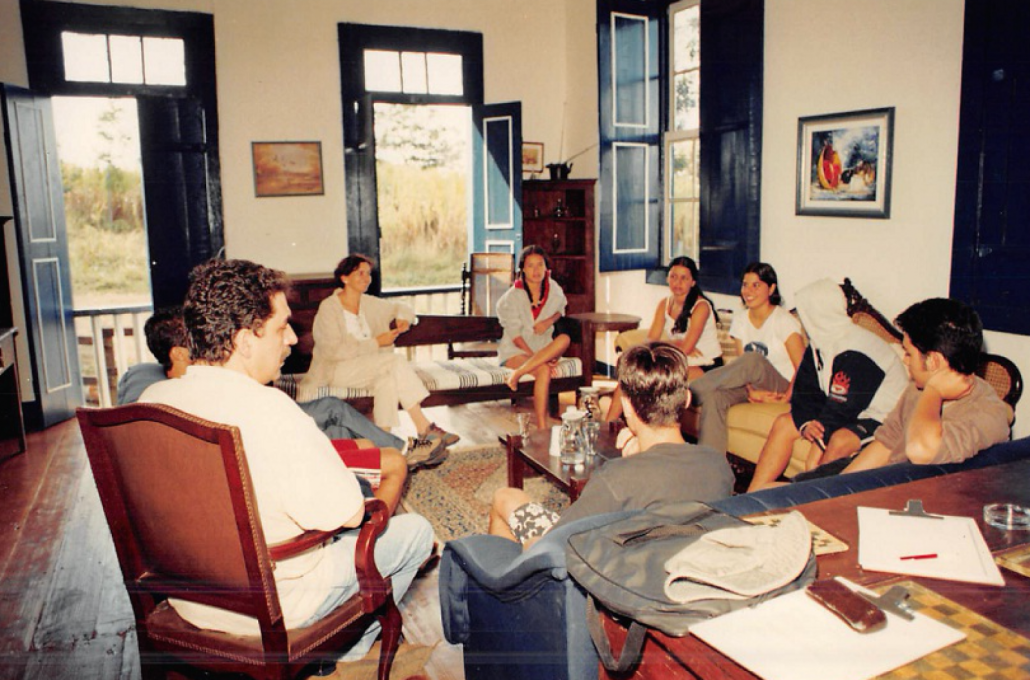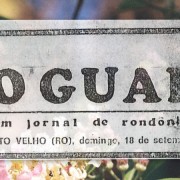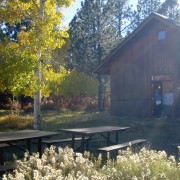Hoasca Tea, more than harmless, beneficial
José Roberto Campos de Souza*
| March 14, 2017
The expansion and consequent visibility of Hoasca tea (Ayahuasca in academia, and Vegetal in the UDV) gave rise, at many times, to criticism (baseless) that its use could pose a potential risk or harm to the health. The first criticism in the press was published in the 1970s, in the Alto Madeira Newspaper (Porto Velho- RO), where a psychiatrist made some claims affirming of the potential harm to the health of its users (again, baseless).
These claims were taken to be true and the Beneficent Spiritist Center União do Vegetal had to reach out to the public, not just to refute the allegations based on their own empirical observations, but to also open its doors to research and evaluations, with the serene certainty of the already observed benefits to its members.
Read more: “40 years ago, UDV opened its doors to the scientific community”.
Beneficial effects of regular use
Some milestones from this trajectory deserve to be highlighted, like the Hoasca Project, an extensive and exhaustive work carried out in the 1990s. Officially titled, “Human Pharmacology of Hoasca”, the project involved nine entities, including universities from Brazil, Europe, and the United States, with logistical support from the Center and unrestricted investigative openness; this attitude impressed the researchers due to its novelty in the academic world. This evaluation, which addressed the clinical and psychiatric aspects of its users, brought proof of what we had already known: the tea is harmless to the health. But, more than this, the research brought clear indications of the beneficial effects of its regular use.
Already at that time, the “Human Pharmacology of Hoasca” study indicated some benefits in the ritual use of Hoasca Tea, such as a re-equilibration of the mental-emotional condition of its users – UDV associates – as well as the recovery of drug, alcohol, and tobacco users. Additionally, the study showed that members of the Center were comparatively more emotionally and sentimentally balanced than the non-members of the control group, who had never drunk the Tea. This study, to date the best reference for the academic world on the use of Vegetal, opened a range of options for the eventual “therapeutic” potential, due to the incredible transformations observed in the lives of the members that participated in the study.
University of California
At the end of the 1990s, the question of the possible harmful effects of Hoasca Tea reappeared, regarding its use by children and young people due to them being in a development stage of life. Once again, the Center took the initiative to encourage a research study of individuals in this age group who regularly attended the sessions, comparing them with a similar group of young people who had never drank the Tea. The University of California and the Federal University of São Paulo (Unifesp) were the ones who mobilized to create the Research Protocol, as well as the collection, analysis, and publication of the results. That study evaluated questions of memory and concentration, use of alcohol or other drugs, behavioral aspects, etc. Once again, the safety of the Tea was confirmed, and again there were indications of the potential beneficial effects of its ritual use.
Read more: “Teens participate in Hoasca Tea research”| DMC/Sede Geral.
From this work, it is worth mentioning some excerpts from its conclusions:
“The qualitative data show that the adolescents of the União do Vegetal appear to be healthy, thoughtful, and humanitarian and connected to their families and religious peers.”
“Adolescents using ayahuasca in a controlled environment were mostly comparable to the control group, except for a considerably smaller proportion of alcohol users. Religious affiliation seems to have played a decisive role as a moderating factor for the use of alcohol” (emphasis added by us).
“It was observed that, compared to the controls, there were considerably lower frequencies of levels of anxiety, dysmorphic disorders (intense preoccupation with appearance) and concentration problems detected among adolescents using ayahuasca in spite of the similar psychopathological profiles revealed in the study of both groups. The low frequencies of psychiatric symptoms detected among adolescents who consume ayahuasca within a religious context may reflect the positive influence of their religious affiliation.”
Antidepressant effect of Hoasca Tea
In more recent years, there has been a considerable increase in the interest from the academic community for the Tea and its effects, with multiple studies being conducted worldwide, whose results corroborate our empirical observations and, also, the words of our Guide, Mestre Gabriel, the founder of the UDV. Research recently carried out by scientists from the University of São Paulo (USP) substantiated the clear anti-depressant effect of the Tea. This work, presented by the respected Nature Magazine, confirmed what we already knew:
The results showed that there was improvement in all participants, regardless of the degree of depression they presented. According to one of the questionnaires, the day after the experiment, there was a 62% reduction in symptoms. A week later, the effect continued to expand, reaching 72%. According to another questionnaire, three weeks after ingestion of the dose, the decrease in symptoms such as sadness, difficulty concentration, suicidal ideations, and negative thinking had reached 82% (Nature | doi:10.1038/nature.2015.17252).
Enhancement of Nerve Cell Production
Other studies, realized at the Federal University of Rio de Janeiro (UFRJ), show that the use of the Tea enhances the productions of new nerve cells, as well as an increase in the formation of dendrites – the “fingers” –, which allow for communication between the cells, forming a network of communication that enables the improvement of cerebral functions; the greater the number of interconnected cells, the better the performance, even in learning new skills. This ability, coupled with the mechanism of action of one of the components of the tea, which acts as a neurotransmitter, promoting the “connection” between nerve cells, gives it a rare characteristic of being a “psychointegrative” substance, in other words, it facilitates the development of human potential in a positive way.
Interest in this aspect arose from the observation of the results of the aforementioned research. The observation of the antidepressant effect of the Hoasca Tea brought the question of why this phenomenon occurs, in order to know if it is due to a transitory effect of some substance present, or – as it is suggested – of structural changes triggered by its use.
Some of our empirical observations still lack methodological proof. One of these is the low – almost nonexistent – occurrence of cognitive deficit, or Alzheimer’s, among our elderly. These observations keep our doors open to any serious investigators who are committed to the truth and conduct ethical research.
The fact is that, since the União do Vegetal has taken the initiative to open its doors to the scientific community, academic science has been confirming what spiritual science has always shown: the Tea is a facilitator of the goal established by Mestre Gabriel, “to work for the evolution of the human being, in the sense of his or her spiritual development.
*Member of the Cadre of Mestres of Nucleo Luz de Maria (Campo Grande -MS) and director of the Medical and Scientific Department (DEMEC) of the General Directorate of the Beneficent Spiritist Center União do Vegetal.
Coordinator of Translation: Isabel Cavalcante, member of Body of Counsel of Nucleo Jardim Florescendo (Gainesville, FL – USA) | Translated by: Jonathan Spoliansky, member of the Body of Counsel of Nucleo Jardim Florescendo (Gainesville, FL – USA) | Revised by: Patrick Medina, member of the instructive body of Nucleo Luz Abençoada (Florianopolis, SC – Brazil)
 English
English Español
Español




